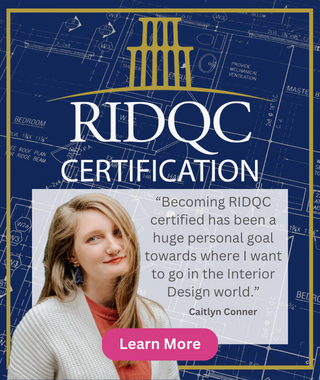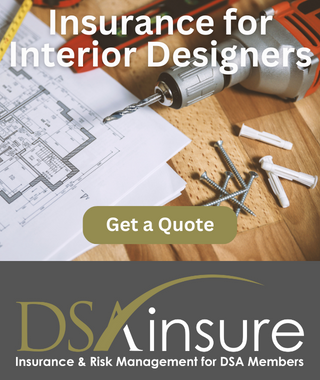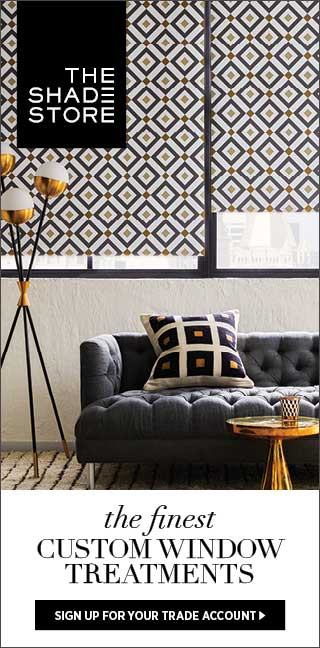Notes from Natasha
DSA member meeting
 Grab a cup of coffee and set yourself up in your favorite chair. In this challenging economy it is important to stick together! DSA is setting up a webinar for members only.
Grab a cup of coffee and set yourself up in your favorite chair. In this challenging economy it is important to stick together! DSA is setting up a webinar for members only.
We will discuss important topics and ways for us to network.
No worries, it is FREE. We would just like you to be part of it. If there are any topics that you would like mentioned, please email us below with the topic and a possible solution and we will do our best to get it done! Please email DSA support@dsasociety.org

Meeting
Save the Date
Meeting date: August 10, 2011
Location: Online
Time: 2:00 pm eastern time
Sharing
"Sharing is taking what's useful to one
and making it useful by two.
It can be hard
to give up what you have,
but it shows that you care
when you do." unknown author
Members will receive an invitation via email from DSA "Go to Webinar" any questions please contact DSA @ 229 888-2459 ext "0".
"It was like a meeting of minds,
so simple yet so refined,
one of those lucky finds,
two of the same kind. " Bella, United Kingdom
DSA Loyalty AmbassadorGraceful Lifestyles Designs
Does the shape of the building matter?
Feng Shui/Intentional Environmental Design
Written by: Mary Dennis
Executive Director,
School of Graceful Lifestyles
www.gracefullifetsyles.com
 Intentional Environmental Design asks, does the shape of the building matter?
Intentional Environmental Design asks, does the shape of the building matter?
I have been involved with a corporate consolidation for the past 6 months. The goal was to move all employees from one building into 2 separate buildings. Our goal was to provide them with an assessment of which building would have stronger support for Senior Leadership placement.
Below is a brief overview of the shapes of the buildings and the feng shui/intentional environmental design assessment.
Intentional Environmental Design works within the realm of the seen and the unseen, the essential ingredient being energy, animate and inanimate. IED underscores the psychology of the built environment and the study of the Person Place Connection. It's definition in short, is the "art of placement."
It is based on mans relationship with nature and the principals of harmony and balance. It falls under the category of the natural, behavioral & physical sciences.
The use of specific design elements, such as shape and color, is taken directly from nature. These Natural Elements are referred to as Fire, Earth, Metal, Water & Wood.
Each element is multi layered, and includes many attributes that support functionality and sustainability in the built environment. Attributes are multi dimensional and versatile so as to include, such things as less absenteeism, efficiency, less stress and overall well being. Each shape and element stirs an emotional response for occupants, potential owners, sales agents and others and effects the way one feels and operates in the designed space.
That being said, the most important and first consideration is the shape of the building and the placement of the occupants within the space. Does the shape of the building influence the way a person feels in the built environment?
The following is a brief analysis of the existing buildings from an Intentional Environmental Design perspective. I trust this information will add an expanded perspective and support for Senior Leadership and the placement of their Vice Presidents, departments and consolidation design.
Please know there is no right or wrong, as all can be remedied and supported through correct intentional environmental design.
IED Recommendations & Brief Analysis:
The #10650 building featured below is whole and complete in its shape. The shape is a full rectangle, and holds the energy of wood/earth. The Wood attribute holds the energy of an upward movement and the Earth attributes are defined as, trust, strong, solid, safe and balanced. This is a good, strong & complete shape for any building. People tend to feel comfortable and safe in spaces that have all 4 corners visible and complete. The square/rectangular shape gives one a sense of trust, & security.
The #10650 floor plan features a center lobby which through its placement anchors the space and use.
The design intent includes adding an exterior canopy (shown in purple) which will extend over the entrance as you enter the building. Corporate Signage will be added as well. The extension will become visible to all who pass by. This will ground, anchor and make visible the desired new campus in this corporate center.
In addition, the #10650 placement of East Coast Sales VP and West Coast Sales VP would hold a more prominent position than in the #10750 option, because of their proximity to the front lobby. VPs, although independent of one another, would share the alignment of the newly remodeled adjoining conference room, which they could share with all occupants, as well as their teams. The #10650 Option has covered parking presenting a sense of safety for employees who enter through this venue.

#10750, featured below is L shaped and irregular. The L-Shaped Building presents an individual with a split decision upon entering into the workspace, no place to focus and feel grounded. Lobby, apex of L-shape workspace, and far reaching ends of each wing are visually disconnected, creating a possible sense of uncertainty. The shape of the building feels weak and incomplete and will be better supported and remedied through Intentional Design.
Option #10750 Placements: West Coast Sales VP and East Coast Sale VP s are positioned in the upper left hand corner, a far distance from the main lobby and would be entering the building through a side entrance with no covered parking. This placement holds less prominence and strength. One can parallel this as walking into one's home through the garage, an option considered as less correct placement for the person/place connection.
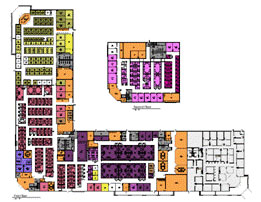
Our recommendations for the #10650 building, as our first choice option, were duly noted and final decisions are forthcoming.
Please note building shapes and land shapes hold the strongest amount of energy. They are the first consideration when Intentional Designing any space.
X Crisp, Clean, & Neutral
X Class A Building
X L-Shaped Building presents an individual with a split decision upon entering the workspace. No place to focus and feel grounded.
X Lobby--apex of L-shape workspace; far reaching ends of each wing are visually disconnected, creating a sense of uncertainty.
X Numerous & secondary entries & exits in two opposing wings
Mary Dennis, DSA, IFSG
Executive Director
School of Graceful Lifestyles
www.gracefullifestyles.com 615-867-7181
Mention DSA and receive 6 months additional DSA membership free. Call 229 888-2459 ext "0".
An Excerpt from: 5 Day Feng Shui Interior Design Course
September 7th.-11th. 20011 Nashville, TN.


 It's a challenging economy - what can you do? Sharpening your skills and developing specialties can help you ride out the bad economy and come out on top. Economists recommend investing in yourself during an economic slump - view it as a sort of unexpected sabbatical! Not only will you end up beating out the competition, you will also increase your income. Take this time to grow. It might not be at the time that you would have chosen but that's okay. Target specialized areas of the design business that are experiencing growth--redesign, staging, and restoration, to name just a few. Also, focusing on niches such as feng shui, green design and positive/ negative ions in design will increase your competitive edge and give you a more rounded portfolio, making you hot stuff when we come out of this economic lull. DSA has gathered several experts in these fields to help train you in specialty areas. Read this newsletter and future editions for discounts and great advice.
It's a challenging economy - what can you do? Sharpening your skills and developing specialties can help you ride out the bad economy and come out on top. Economists recommend investing in yourself during an economic slump - view it as a sort of unexpected sabbatical! Not only will you end up beating out the competition, you will also increase your income. Take this time to grow. It might not be at the time that you would have chosen but that's okay. Target specialized areas of the design business that are experiencing growth--redesign, staging, and restoration, to name just a few. Also, focusing on niches such as feng shui, green design and positive/ negative ions in design will increase your competitive edge and give you a more rounded portfolio, making you hot stuff when we come out of this economic lull. DSA has gathered several experts in these fields to help train you in specialty areas. Read this newsletter and future editions for discounts and great advice. Grab a cup of coffee and set yourself up in your favorite chair. In this challenging economy it is important to stick together! DSA is setting up a webinar for members only.
Grab a cup of coffee and set yourself up in your favorite chair. In this challenging economy it is important to stick together! DSA is setting up a webinar for members only.
 Intentional Environmental Design asks, does the shape of the building matter?
Intentional Environmental Design asks, does the shape of the building matter?

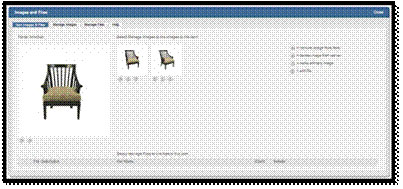 Visually view and manage product images related to your design projects. Upload product images from your computer or capture them from manufacturer websites. Quickly and easily attach unlimited images to items on proposals, orders and invoices.
Visually view and manage product images related to your design projects. Upload product images from your computer or capture them from manufacturer websites. Quickly and easily attach unlimited images to items on proposals, orders and invoices. Becky Harmon hosts Home Staging and Redesign certification classes monthly in the Jacksonville, Florida resort community, Queens Harbour Yacht Club. Clients have one opportunity to make a first impression when selling their homes. National surveys have discovered that staged homes sell in half the time and can add up to 10% to the value of the selling price. For clients who are not selling their homes, a redesign can offer a breath of fresh air to an old, stale space. By utilizing what a client already owns and adding a few new pieces or a fresh coat of paint, you can turn your client's home into a new space.
Becky Harmon hosts Home Staging and Redesign certification classes monthly in the Jacksonville, Florida resort community, Queens Harbour Yacht Club. Clients have one opportunity to make a first impression when selling their homes. National surveys have discovered that staged homes sell in half the time and can add up to 10% to the value of the selling price. For clients who are not selling their homes, a redesign can offer a breath of fresh air to an old, stale space. By utilizing what a client already owns and adding a few new pieces or a fresh coat of paint, you can turn your client's home into a new space. There are a plethora of sustainable options in design. Sustainable options range from earthy-looking bio-composite boards to exotic crystal-filled glass panels; naturally, some options are more expensive than others. Sustainability comes in the form of rapidly renewable and recycled materials. In this article, we will review the various countertop options and their sustainable features.
There are a plethora of sustainable options in design. Sustainable options range from earthy-looking bio-composite boards to exotic crystal-filled glass panels; naturally, some options are more expensive than others. Sustainability comes in the form of rapidly renewable and recycled materials. In this article, we will review the various countertop options and their sustainable features.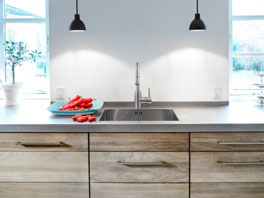 Laminates are typically installed on medium or high-density fiberboard. Fiberboard is made of wood fiber and resin and is a mixed blessing. While the wood fiber is entirely recycled content, the resin can introduce VOCs. This factor is especially important in healthcare and childcare situations and can be addressed in one of two ways. One way is to use fiberboard with no added urea formaldehyde; the other option is to seal the non-laminated surfaces. Scientific Certification Services (www.scscertified.com) offers "no added formaldehyde" and "no added urea formaldehyde" certifications along with product databases.
Laminates are typically installed on medium or high-density fiberboard. Fiberboard is made of wood fiber and resin and is a mixed blessing. While the wood fiber is entirely recycled content, the resin can introduce VOCs. This factor is especially important in healthcare and childcare situations and can be addressed in one of two ways. One way is to use fiberboard with no added urea formaldehyde; the other option is to seal the non-laminated surfaces. Scientific Certification Services (www.scscertified.com) offers "no added formaldehyde" and "no added urea formaldehyde" certifications along with product databases. Countertops made of composite and solid surfaces are more durable than those made of laminate. A surface blemish does not reveal a different color underneath. Almost all composite surfaces contain rapidly renewable or recycled content along with a binder. Some use recycled content such as glass or concrete. Others use paper, wood, or agricultural byproducts. There is a wide variety of composition, appearance and price, and almost all composites are made in North America. Solid surfaces, similar to composite surfaces in many respects, are a different story. Only one brand (Wilsonart) contains recycled content and none are made in North America.
Countertops made of composite and solid surfaces are more durable than those made of laminate. A surface blemish does not reveal a different color underneath. Almost all composite surfaces contain rapidly renewable or recycled content along with a binder. Some use recycled content such as glass or concrete. Others use paper, wood, or agricultural byproducts. There is a wide variety of composition, appearance and price, and almost all composites are made in North America. Solid surfaces, similar to composite surfaces in many respects, are a different story. Only one brand (Wilsonart) contains recycled content and none are made in North America.
 Social Media and YOU
Social Media and YOU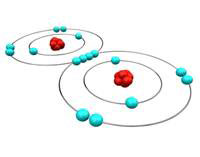 The materials we and others use often require counter-action to make them safe and healthy, to neutralize their potential harm. Pollutants from the outside, pesticides in our air and soil, stagnant air, contaminated or over-treated water--all of these challenges pose new opportunities for imaginative and artistic solutions. Your value to your client--commercial, residential or otherwise--will skyrocket as you are able to help them intelligently consider the environmental quality of their project and provide effective, attractive solutions.
The materials we and others use often require counter-action to make them safe and healthy, to neutralize their potential harm. Pollutants from the outside, pesticides in our air and soil, stagnant air, contaminated or over-treated water--all of these challenges pose new opportunities for imaginative and artistic solutions. Your value to your client--commercial, residential or otherwise--will skyrocket as you are able to help them intelligently consider the environmental quality of their project and provide effective, attractive solutions.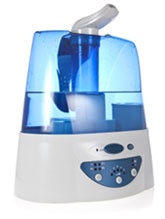 Air pollution is one issue that constitutes a growing challenge in the design world. The natural earth environment has its own balance that (when not too disturbed by us!) sustains and nurtures us. Now that we are creating sophisticated mini-environments, we are finding that we need to pay attention, not simply to developing an aesthetically pleasing, physiologically comfortable surrounding, but to fashioning an atmospherically healthy context as well. We have known for some time now that our bodies must maintain a delicate balance of many kinds of elements in order to function properly. Did you know, however, that negatively charged ions play a critical role in keeping that balance? You might remember from high school chemistry that molecules do their work by binding and rebinding with other molecules, giving and taking ions so that they are either positively or negatively charged. Researchers are finding examples in nature and in empirical study that the electrical charge of the air around us greatly affects physical and mental health. Positively charged ions are associated with higher rates of pulmonary and cardiovascular diseases, stress, migraines, and other physical and physiological ills. Unfortunately, the plethora of technological features we now have in most homes, offices and other spaces, tend to emit large amounts of positive ions and deplete the amount of negative ions in our environments. Negatively charged ions, on the other hand, have been found to produce greater resistance to certain types of diseases, increased energy and productivity, and relief from asthma, allergies, depression and other ailments. In addition, things like mold, pollen, smoke, dust and other particulate pollutants that ride along in the air can be counter-acted by introducing a higher concentration of negative ions. The negative ions can bind to the particulate matter, eliminating those elements from the air.
Air pollution is one issue that constitutes a growing challenge in the design world. The natural earth environment has its own balance that (when not too disturbed by us!) sustains and nurtures us. Now that we are creating sophisticated mini-environments, we are finding that we need to pay attention, not simply to developing an aesthetically pleasing, physiologically comfortable surrounding, but to fashioning an atmospherically healthy context as well. We have known for some time now that our bodies must maintain a delicate balance of many kinds of elements in order to function properly. Did you know, however, that negatively charged ions play a critical role in keeping that balance? You might remember from high school chemistry that molecules do their work by binding and rebinding with other molecules, giving and taking ions so that they are either positively or negatively charged. Researchers are finding examples in nature and in empirical study that the electrical charge of the air around us greatly affects physical and mental health. Positively charged ions are associated with higher rates of pulmonary and cardiovascular diseases, stress, migraines, and other physical and physiological ills. Unfortunately, the plethora of technological features we now have in most homes, offices and other spaces, tend to emit large amounts of positive ions and deplete the amount of negative ions in our environments. Negatively charged ions, on the other hand, have been found to produce greater resistance to certain types of diseases, increased energy and productivity, and relief from asthma, allergies, depression and other ailments. In addition, things like mold, pollen, smoke, dust and other particulate pollutants that ride along in the air can be counter-acted by introducing a higher concentration of negative ions. The negative ions can bind to the particulate matter, eliminating those elements from the air.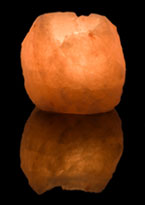 Many types of air purifiers and ionization techniques have been developed. You can find anything from the most sophisticated Bipolar Air Ionization systems to the most earthy homeopathic remedies. Perhaps a blend of various systems will work best--with different blends tailored to fit each project. The important thing to realize is that the appliances, technology, and materials used in the environment you are creating will have long term effects on the inhabitants of that space. Thus, as you create your space, consider how you could build in features that will rejuvenate and enliven the atmosphere of that space--your clients will thank you for it!
Many types of air purifiers and ionization techniques have been developed. You can find anything from the most sophisticated Bipolar Air Ionization systems to the most earthy homeopathic remedies. Perhaps a blend of various systems will work best--with different blends tailored to fit each project. The important thing to realize is that the appliances, technology, and materials used in the environment you are creating will have long term effects on the inhabitants of that space. Thus, as you create your space, consider how you could build in features that will rejuvenate and enliven the atmosphere of that space--your clients will thank you for it!
 What's holding you back from the success you want and deserve? Have you asked yourself that question, and if so, what do you think is the real reason?
What's holding you back from the success you want and deserve? Have you asked yourself that question, and if so, what do you think is the real reason?
